#viking animal head brooch
Explore tagged Tumblr posts
Text

Ring brooch
Viking, 800-1100 CE
Bronze penannular brooch with remnants of iron rivets. The brooch has punched decoration and animal head-shaped ends.
64 notes
·
View notes
Link
Viking Penannular Brooch 108814

#108814#viking penannular brooch#penannular brooch#viking brooch#animal head brooch#viking animal head brooch#animal head#inspiration#scandinavia#viking#viking age
1 note
·
View note
Text
The Jellinge Style(c.900-975AD) Was almost contemporary to the Borre Style and developed further into the Mammen Style.
Characterised by S-shaped animals with a ribbon-shaped body without perforations or indentations.
The body of the animal is often filled with a row of beading, double contoured and has an insubstantial spiral-like hip.
The animal heads are in profile with a circular eye, and open jaw, the upper one embellished by a curlicue(lip-lappet).
The bodies of the animals are regularly interlaced without frequent or close intertwining, leaving an open background.
.
One of the most know finging with that Style, is the Silver cup from the JELLING burial. In that horn, the design comes from two different brooches.
.
#jelling #art #style #medievalstyle #medievalart #finding #craft #carving #crafter #inspiration #inspiredby #era #vikingage #paganart #animal #middleage #fromthepast #heritage #elders #museum #lifestyle #knowledgeable #query #brooches #replica #ourpast #viking
instagram
2 notes
·
View notes
Photo


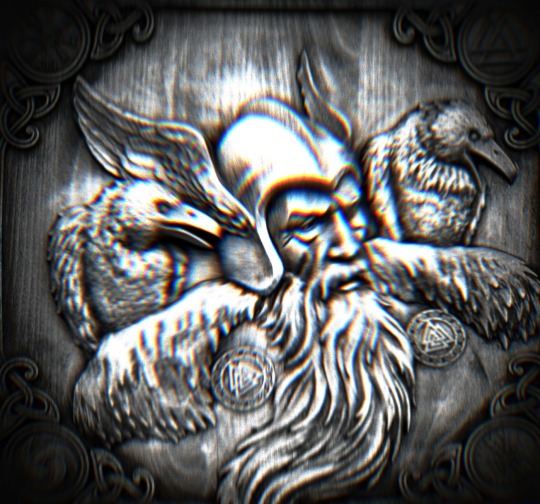
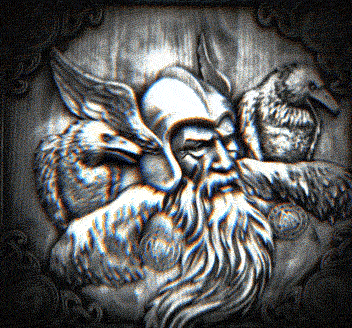
Huginn and Muninn
Whether Odin is presiding over a grand banquet or galloping into the fearsome battle of Ragnarök, where he must meet his doom, he is always attended by Huginn and Muninn. These powerful ravens are much more than servants to Odin. Day after day, battle after battle, they prove themselves as trusted allies and inseparable friends.
What Are Huginn and Muninn?
Huginn and Muninn are a pair of ravens who, according to Norse mythology, are enlisted in Odin’s service. The birds depart every morning at dawn to fly around the Norse world, Midgard. At dinner, they return to their perches on Odin’s shoulders and tell him what they have seen.
Characteristics
Physical Description
Physically speaking, Huginn and Muninn don’t have much to set them apart from your garden variety raven. They are large, ominous looking birds with inky black feathers and big, sharp beaks. Their powerful wings can lift them high into the sky, while their beady eyes allow them to make out the landscape below in vivid detail.
Special Abilities
Although Huginn and Muninn might look like common ravens, they have been endowed by Odin with wonderful powers. First, the birds are able to fly the entire world of Midgard in a single day. Second, they have the ability to understand, and even speak in, the language of men. Third, they have extremely shrewd minds and wonderful powers of observation. The ravens are no mere spies for Odin; they are important advisers and confidants too.
Huginn and Muninn can also accompany Odin into battle, where they inform him of his enemy’s movements and help him guide and heal his horse.
Relationship with Odin
Some scholars interpret Huginn and Muninn as projections of Odin himself, rather than common ravens whom he has blessed with special powers. In Norse culture, it was common for shamans to enter a trance-like state, during which they sent their consciousness to probe the world and bring back information. Odin’s ravens’ names (Huginn meaning “thought” and Muninn meaning “desire or mind”) support the idea that they are projections of his consciousness. It’s no great stretch of the imagination to believe that Odin, the leader of the gods, could project his “thought” and his “mind” in the same way that a shaman could and that the ravens are simply symbols of his omnipotence.
Other scholars believe that Huginn and Muninn are Odin’s fylgjur. In Norse culture, spirit animals, called fylgjur, are commonly seen in the company of great men and women. These animals are manifestations of the person’s character. Someone with a fox as a fylgja is sly and cunning, while someone with an ox as a flygja is strong but tame. Ravens embody wisdom and guidance in Norse culture, so a god with two ravens as his flygjur would be a wise guide—just like Odin.
Fylgjur are often tied into a person’s fate as well; they tend to show up just before a climactic moment in the person’s life, and they are often omens of death. Huginn and Muninn frequently appear in depictions of Ragnarök, the great, apocalyptic battle where Odin is doomed to die. The ravens warn him of the event and remain on his shoulders during the battle.
Finally, some scholars believe that Huginn and Muninn are Odin’s hamingja, a physical embodiment of his luck. In Norse culture, the spirit is made up of many, separable parts that can be sent on different errands. The hamingja is one of those parts, and because it is not one of the most essential parts of the spirit, it is often deployed on small missions.
History
Archaeological Record
Ravens litter the archaeological digs that have given us much of our knowledge about Norse culture. Across nine centuries and four countries, these birds have reigned supreme as Norse symbols, flying around Odin’s head or perched on his shoulders.
The ravens appear in golden amulets, helmet plates, and shoulder brooches, dated back to the fifth, sixth, and seventh centuries. They grace the Oserberg Tapestry, which was found aboard a ninth-century Viking funeral ship, and they perch on Thorwald’s Cross, a rune stone from the eleventh century. Sweden, Denmark, Norway, and even England have all yielded evidence that local people called upon Huginn and Muninn for power and guidance.
Literature
Huginn and Muninn appear in some of the earliest, definitive texts on Norse Culture. Their black shapes can be found soaring through the Poetic Edda, a 13th century compilation based on traditional folklore, as well as The Prose Edda, the Heimskringla, and the Third Grammatical Treatise, where they are seen cozying up to Odin on his shoulder.
Explanation of the Myth
It’s no coincidence that Huginn and Muninn, a pair of almighty ravens, were hatched from Norse culture. Not only are ravens powerful and common symbols in Norse folklore, they played an important role in the everyday life of Norse people, too.
Perhaps the first link between Norse people and ravens was their eating habits. Early Norse people were hunters and gatherers, while ravens were carrion feeders. A clever raven might trail a hunter for a day, and when he made a kill, invite himself to the feast. Likewise, a hungry hunter might notice a raven circling in the sky and follow it to a ready meal. In this way, a primitive bond may have formed between Norse people and ravens.
As time went by and Norse civilization advanced, people began embarking on the famous sea voyages that would win Norse culture a glorious place in history—and they took their allies, the ravens, with them. Just as ravens once guided the Norse people to food, they were now relied upon to guide their boats to land. The mighty birds were carried in cages on Viking ships. At regular intervals, they were taken from their cages and tossed into the sea breeze to scout out the boat’s surroundings. If the bird found land, it would head that way instead of returning to the ship. If it didn’t find land, it would return to the ship.
Because they played such an important role in the everyday lives of Norse people, ravens began to be revered by the people. After guiding hundreds of Norse people to food and safety, it’s little wonder that these great black birds found their way onto Odin’s shoulders!
—
I am currently giving continuation to my project where i edit all mythological creatures that i can find day by day, all edits are mady with:
pixlr.com/x/
photomosh.com
:: btw it really sucks that tumblr doesn’t let people upload gifs with less than 3mb
#occult#mythology#dark#gore#trippy#obscure#evil#creature#legendary#witchcraft#magic#folklore#greek#vaporwave#aesthetic#monster#lore#alchemy#blackandwhite#rgb#photooftheday#haunted#creepy#scary#lost#history#dead#nature#animals#fable
124 notes
·
View notes
Text
Viking Clothing
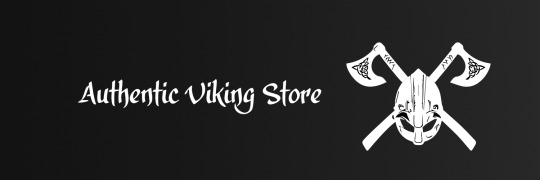
Viking Weapons To keep you in touch with the Viking era, The Viking Clothing Store is your holy grail. Do you wish to look like one of the natives of Norway? You are cordially invited to browse through Viking Clothing store for a Scandinavian touch to your wardrobe!
What’s in it for you? Well, you get a chance to retouch your Scandinavian roots through Viking jewelry, Ekelund linens, Royal Copenhagen souvenirs, Viking clothing, home accessories, and what not!
About Viking Clothing Store
The inspiration of Viking Clothing store came through the battling festivities of Viking Era. Just like Jomsborgelag, you will only get genuine handicrafts and no replicas in here. If you associate with the International warrior brotherhood and Viking re-enactment combats, you have landed in the right place.
To make you look like a genuine Viking, you must have all possibilities presented to you. Hence, Viking Clothing store presents all haberdashery, pattern, and yarn choices to you.
Your desires matter most!
This means you now have the chance to take the Viking culture beyond the borders of Norway, Poland, Iceland, and The Netherland and celebrate it wherever you are!
Warrior clothing
To look like a Norse warrior, you must drape the viking armor as the helmet, shoulder armor and bracers right out of Scandinavia. To get the real ancient warrior look while reenacting the exciting combats, you must shop these bows made out of strongest alloys.
To be able to clash those swords, you also need swords of premium quality. Display your confidence using all these battle-ready arms. These sharp axes, spears, knives or seax, and daggers aren’t breaking away anytime soon.
And you dare not forget drinking horns, blowing horns, and cloaks! That’s exactly the kind of gear a warrior needs. Also, chainmail, shields, and helmets make good decoration pieces.
Authentic Attire
Our authentic attire collection is not just about viking outfits. But it is complete state of the art hand craftsmanship of each and everything of that era. Like in clothing, we’re covering the minutest details, like the clock pin and brooches etc!
To get an authentic look of the fisherman or farmer from that era, you need to restructure your attire and clothing their way. To keep things as authentic as possible, you must prefer the handicrafts.
You might want to dress up like a Viking Jarl, king, farmer, trader or a viking warrior. To pull off these looks, explore our complete Viking kit from pointy Hedeby viking boots to woolen nalbinding socks!
Viking Jewelry
Talking about our best selling Viking Merch, how could you forget the Viking jewelry. You want the most popular pieces, right? Check out Wolf king chain, Freyja Amulet, Vegvisir ring and troll cross.
All these statement pieces are artistic and abstract. Instagram able aesthetics, no? With a hint of animals, nature, and mythology from the Viking era, you will feel like you belong there.
You might want to revive the Viking era in style! Hence, all of this Norse jewelry including Viking beads, bracelets, earrings, pendants, necklaces, arm rings torcs, keychains, coins and rings are handcrafted for you!
Fashion for Men and Women
Embroidered Hangerock and aprons are clear examples of how fashionable Viking men and women were. To be in Viking shoes, quite literally, you also need to get hold of these woolen and linen Viking wedding dresses.
Similarly, leather pouches and customized belts and buckles need to be embellished with genuine fittings to emit those Viking vibes. To keep Viking customs alive, all tunics and cape are still handmade using natural linens. With short sleeves and embroidered symbols, both men and women looked extremely classy!
To imitate the elite classes of Viking community, grab your bronze fittings, brass buckles, and bags. Pair those up with grey hued and woven leg wraps.
Imagine yourself in a shoulder to ankle length Viking wedding dress. Top that with wool strap dress. Don’t forget the iron or bronze brooches to fasten things together.
Shenanigans like pockets and buttons were uncommon. But to spice things up, silk garments were imported by the elite. Back then, they came across great distances. But they are delivered free of shipment costs now!
With open air tasks like ship building and raiding, head wear must have been common in winters. But their taste for bright colors lasted through the seasons.
Best place to buy Viking clothing
Since you have stepped inside the best Viking clothing store, you will see the Nordic culture brought to life! You know the best Viking Clothing store is one who has studied the ancient patterns like Bible. Each historical reproduction coming out to you comes from the craftiest hands.
So, if you are looking for the widest collection of Viking gear, supplies, kit and equipment, there isn’t a better option for you. Re-enactors, museums, theatres, and schools are welcomed to enjoy these living history supplies!
While window shopping those beautiful Viking T-shirts, trousers, pants, beanies or caps, jackets, robes, pins, hoodies, and kilts, the best store also teaches you a technique or two. From Viking feasting supplies to Asatru Norse religion supplies, you name it! All this merchandise is inspired from Viking games, music, religion, and literature.
Worldwide free shipping
Just knowing it all isn’t enough. You need to get your hands on your favorite Viking outfit and artifacts. Here is when the worldwide free shipping comes into play!
With live updates of your Viking parcel, the wait will be easy. So after you have learnt the Viking culture, your shipment is only a few clicks away from your doorstep. How cool, no?
To spice things up, you enjoy no minimum order limits both in terms of amount and units. You might have to check your nearest post office in case of any delay. No matter where you are situated, your Viking themed pack will reach you in no more than 4 weeks! Viking T Shirts
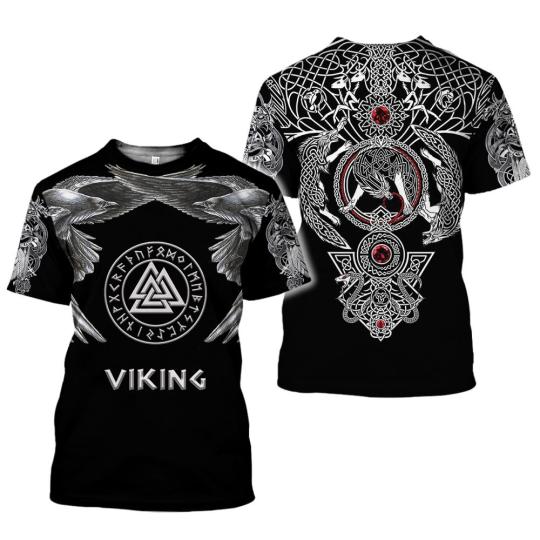
Viking Weapons
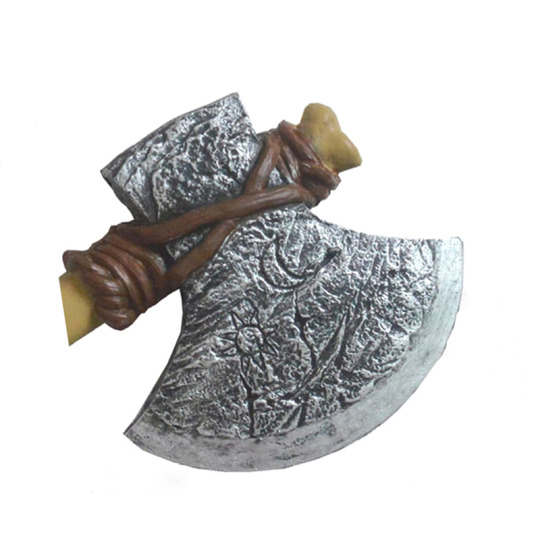
Viking Earrings
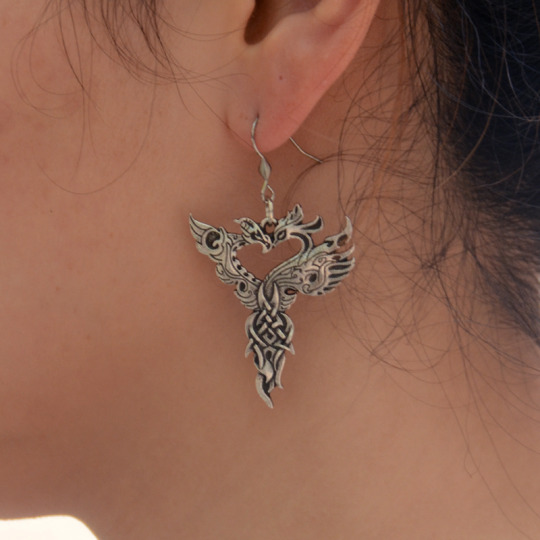
Our Collection
Viking Armor
Viking Axe
Viking Bags
Viking Beanie & Cap
Viking Beard Beads
Viking Belt & Buckle
Viking Blowing Horn
Viking Boots & Shoes
Viking Bracelet and Arm Rings
Viking Bracers
Viking Cape
Viking Chainmail
Viking Cloak
Viking Coat
Viking Coins
Viking Costume
Viking Drinking Horn
Viking Earrings
Viking Helmet
Viking Jackets
Viking Jewelry
Viking Keychain
Viking Kilt
Viking Leg Wraps
Viking Merch
Viking Mugs
Viking Necklace & pendants
Viking Pants and Trouser
Viking Pin & Brooches
Viking Rings
Viking Seax Knife & Dagger
Viking Shield
Viking Shoulder Armor
Viking Spear
Viking Sword
Viking T Shirts
Viking Torc
Viking Tunic & Robe
Viking Weapons
Viking Wedding Dress
Useful Links:
About Us
Terms and Conditions
Refunds & Cancellation Policy
Shipping and Returns
Privacy Policy
Contact Us
3 notes
·
View notes
Link
Viking Animal Head Brooch 23998

#23998#viking animal head brooch#animal head brooch#animal head#viking brooch#viking#viking age#brooch#inspiration#scandinavia
0 notes
Link
Viking Animal Head Brooch 450217

#450217#viking animal head brooch#viking brooch#brooch#animal head brooch#animal head#scandinavia#inspiration#viking#viking age
0 notes
Text
The History of Norsemen, or Vikings
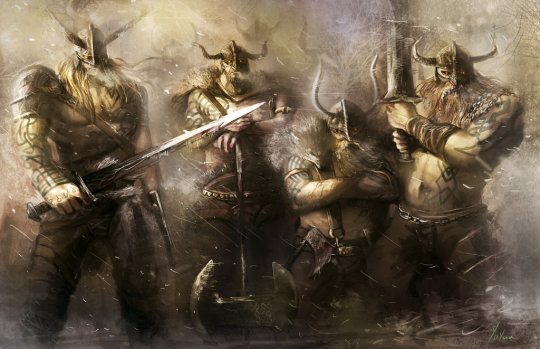
During the tenth century Charlemagne’s empire and Anglo-Saxon England were attacked by a new group of invaders known as Norsemen, or Vikings. They came from the far northern part of Europe now called Scandinavia. The tall, fair-skinned Vikings became known as brutal fighters and robbers. They spread fear and destruction throughout western Europe for several hundred years. At the same time, however, they opened up new trade routes and brought shipping skills to other Europeans.
The Vikings captured parts of Britain and France. They ruled cities in Russia and set up colonies on islands in the North Atlantic. They even paid a brief visit to North America. Those who went abroad married the people they conquered. They also accepted a new religion and customs. Others stayed in Scandinavia and set up the kingdoms of Norway, Sweden, and Denmark.
THE LAND
The Viking homeland of Scandinavia was an area mostly of forests and long, rugged coastlines. The southern part, known as Jutland, 0r Denmark, had many natural harbors. It also had large plains where the Vikings grew oats, barley, rye, and wheat and pastured their cattle, sheep, and pigs.
The rest of Scandinavia was not as well suited to farming. Winters were long and cold, summers short and mild, and the soil rocky. The coastline, however, had many fjords, or bays. So the people turned to the sea to making a living.
SHIPS AND TRADE
The Vikings built ships with timber from the dense forests and sailed out of the fjords onto the sea to make a living. The ships were large and well suited for long voyages. The bodies were long and narrow. The sides, where a single row of 16 oars was placed, were usually decorated with black or yellow painted shields. The tall bows were carved in the shape of a dragon’s head. This was supposed to frighten both enemies and the evil spirits of the ocean. The strongly sewn sails were square and often striped red and yellow. The ships bore names like “Snake of the Sea,” “Raven of the Wind,” and “Lion of the Waves.”
An awning in the forepart of the ship protected the sailors from bad weather. They slept in leather sleeping bags and carried bronze pots in which to cook their meals. Whenever possible, they cooked their meals ashore to avoid the danger of a fire on board ship.
The Vikings plotted their courses by the positions of the sun and stars. They sailed far out into the North Sea and the Atlantic Ocean in search of good fishing areas and trade. They did most of their traveling and trading in the spring after their fields were sown, or in the fall after their crops were harvested. They spent the long winters in their villages repairing their boats and weapons.
The Vikings were as successful in trade as the Phoenicians. Viking traders carried furs, hides, fish, and slaves to western Europe and the Mediterranean. They returned from these areas with silk, wine, wheat, and silver.
TOWNS, VlLLAGES, AND JARLS
Trade led to the growth of market towns in Scandinavia. These towns usually had two main streets that ran along the water’s edge. Buyers and sellers set up booths and displayed their wares along the streets. The towns were protected on their land side by mounds of earth surrounded by wooden walls with towers.
Most Vikings lived in villages scattered throughout the country. Their houses were made of logs or boards. The roots, which were made of sod-covered wood, slanted steeply to shed the heavy winter snows. Carvings of dragons decorated gables at either end. In front of each house was a small porch supported by carved pillars.
Distance and the cold winters isolated the people of one village from those of another. As a result, there was no central government. The people were divided into groups ruled by military Chieftains calIed jarls. Jarls either inherited their position or were elected to it. They saw to it that their group’s laws were obeyed. Sometimes a jarl became strong enough to take over and unite neighboring territories. When a jarl had enough territory under his rule, he was recognized as a king.
Most Viking adventurers, however, went to western and southern Europe in search of food and valuables. They disguised their ships to look like wooded islands by covering them with tree branches. Then they traveled far up the rivers to make surprise attacks. They stole goods, destroyed homes, burned churches, and killed or sold as slaves any people they captured. All Europe feared the Vikings. In their churches the people prayed, “From the fury of the Norsemen, Good Lord, deliver us!”
THE DANES
Some of the Danish Vikings Settled in the areas they raided. One group of Danes invaded England and set up settlements there. In 954 an heir of Alfred the Great forced them to leave the Danelaw. In 978 Ethelred, nicknamed the Unready, became king of England. The Danes saw their chance and began raiding England again. At first Ethelred was able to buy them off with silver. But in 1017 a Danish king called Knut, or Canute, took over the country and made it part of his North Sea Empire. Canute was a powerful but just ruler. He converted to Christianity and brought peace and prosperity to England. Soon after his death in 1035, however, Danish control of England came to an end. Some Danes left England. Those who remained became a part of the English people and culture.
DAILY LIFE
Family life was important to the Vikings. Most households contained 20 to 30 members including parents, grandparents, married children, and grandchildren. Families often fought bloody feuds to maintain their honor. The payment of fines later put an end to such feuds.
THE PEOPLE
Viking men were warriors called berserkers. They believed in a life of action and valued deeds that called for strength and courage. They fought to gain wealth, honor, and fame. They believed that a liking for war brought special honors from the gods.
To call their warriors to battle, the Vikings lit bonfires on the tops of mountains. Those who saw a fire would light a new one to spread the message. The warriors fought with battle axes, swords, and spears. Metal helmets decorated with animal figures protected their heads. Shirts made of iron rings and covered by a large cloth protected their bodies. The warriors preferred to die by their own hand rather than give their enemies the satisfaction of capturing or killing them.
A Viking groom bought his wife from her family on their wedding day. If he was not pleased with her, he could sell her. Yet the position of Viking women was quite high. They took complete charge of the home. They could attend public meetings and talk with men other than their husbands. They could own property and get a divorce. Many Viking women grew herbs which were used as medicine. All the women encouraged their men to fight.
Both men and women liked fine clothes. The men usually dressed in trousers and woolen shirts covered by knee-length tunics. Broad leather belts held the clothing in place. Sheepskin hoods and caps kept heads warm. For special events the men wore red cloaks with brooches and carried decorated swords and daggers. The women also wore tunics held in place by a belt. They covered their heads with woolen or linen caps, and wore large brooches, pins, and bracelets. Both men and women wore their hair long, and the men took great pride in their mustaches and beards. Calling a Viking man “beardless” was an insult that could be wiped out only by death.
The Vikings had no schools. Parents taught daughters such household skills as spinning, weaving, and sewing. They taught sons to use the bow and arrow and to be good fighters. The boys also memorized tales of heroic warriors and gods, and competed in games that tested their strength and endurance.
RELIGION
The Vikings worshipped many gods which at first were closely ”related to Germanic gods. In time they changed the names and activities of their gods to suit the harsh life 0f Scandinavia. The Vikings believed that the gods were responsible for the weather and for the growth of crops . Since the gods liked to hunt, fish, and play tricks on one another, the Vikings viewed them as extra powerful human beings.
The Vikings bargained with their gods to get what they wanted. Priests offered sacrifices of crops and animals on behalf of the whole community. Most Vikings also had small shrines in their homes where they could pray or offer sacrifices.
The Vikings were proud of their gods and told stories of their great deeds. These stories later became written poems called eddas. The Vikings also composed sagas, or epic stories. At first skilled storytellers used to recite sagas at special banquets. One such saga took 12 days to recite. After 1100 the Vikings wrote down their sagas. With the coming of Christianity, the people lost interest in these tales. Many were forgotten or were forbidden by the Church. Only the people of Iceland passed on the old tales.
At first the Vikings spoke a language similar to that of the Germans. In time the one language developed into four Danish, Norwegian, Swedish, and Icelandic. They were written with letters called runes, which few people except the priests could understand or use. The Vikings used the runes as magic charms. They wrote the runes in metal and carved them in bone in the hope that they would bring good luck. When the Vikings accepted Christianity, they began to write their language with Roman letters.
RAIDS AND ADVENTURERS
Scandinavia’s population kept increasing. By the end of the ninth century many Viking villages were overcrowded, and there was not enough food for everyone. Since there was no central government, the kings constantly fought one another and made life difficult for their enemies. Before long many Viking warriors began to seek their fortunes elsewhere.
Groups of warriors attacked merchant ships on the open seas. Danish Vikings began raiding the coasts of France, England, and Spain. Swedish Vikings crossed the Baltic Sea and traveled down the rivers toward Russia. They founded settlements and began to trade. They established a water route from the Baltic to the Black Sea and on to the wealthy city of Byzantium. This water route came to be known as the Varangian Route. In 862 a Swedish Chieftain named Rurik founded a Viking state that became the basis of the Russian monarchy. Norwegian Vikings established trading towns in Ireland, explored the North Atlantic, and founded a colony on the island of Iceland.
Led by an adventurer named Eric the Red, the Norwegian Vikings began to move even further west. In 986 they founded a colony on the island of Greenland. Then Eric’s son, Leif Ericson, sailed across the Atlantic Ocean and landed on the northeast coast of North America. He and his followers named the spot where they landed Vinland because of the wild grapes they found growing there. Today the area is called Newfoundland. The Vikings did not set up a permanent colony in Vinland because it was so far away from home and the winters were so cold.
SUMMARY
The Vikings lived in northern Europe in an area which is today known as Scandinavia.
The Vikings were excellent warriors, sailors. and navigators who earned their living mainly by fishing and by trading with other European regions.
The Vikings lived in villages that were basically isolated from one another. The Vikings worshipped many gods and often told stories about their great deeds.
At first the Vikings spoke one language, but over time it developed into four separate languages.
When the Vikings accepted Christianity, they stopped writing their languages in runes and began to write with Roman letters.
By the ninth century Scandinavia was overpopulated, so many Viking warriors began to seek their fortunes in other places.
In 862 a Swedish Viking named Rurik established a settlement, and that settlement later developed into the Russian nation.
In 986 Norwegian Vikings founded a colony on Greenland, and several years later sailed as far west as the northeast coast of North America.
In 1017 a Danish king named Canute conquered England, but after his death Danish control of England came to an end.
Other Danish Vikings, after besieging Paris, settled along the French coast in an area known as Normandy.
9 notes
·
View notes
Link
Viking Animal Head Brooch 450802

Gabriel Hildebrand SHM
#viking animal head brooch#animal head brooch#viking brooch#brooch#450802#scandinavia#inspiration#viking age#viking
0 notes